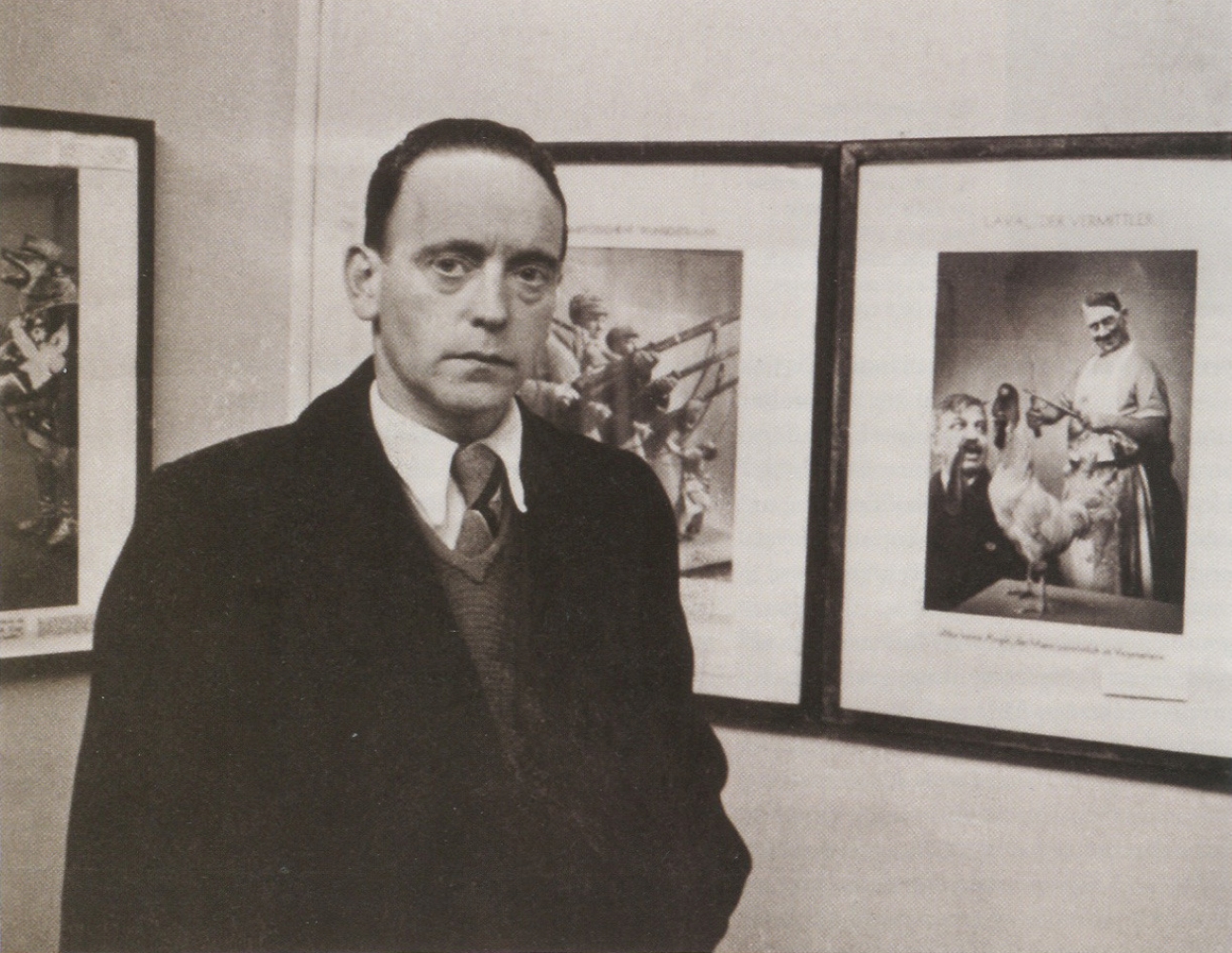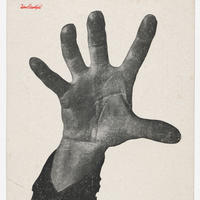More about John Heartfield
Works by John Heartfield

Contributor
Politics and war followed John Heartfield throughout his life.
John Heartfield was born in 1891 in Berlin as the son of socialists. The artist’s original and extremely German-sounding name was Helmut Franz Josef Herzfeld. Herzfeld can be translated to – as you’ve probably already guessed – Heartfield. He changed his name in 1916 to defy German nationalism, which included a hostile attitude towards everything British. His family had to flee to Switzerland when his father – an anarchist writer – was persecuted for blasphemy in one of the plays he wrote. Later, they were deported to Austria, but when his parents disappeared in 1899, Heartfield and his siblings were left abandoned in a mountain hut. The local mayor found them and took care of them until their aunt came to pick them up. It was Heartfield’s aunt who noticed his interest in art. She arranged painting lessons for him and sent him to be trained by a book dealer in Wiesbaden. As the son of two socialists, Heartfield seemed to have been politically active and rebellious by nature. When he was only in elementary school, he allegedly participated in a students’ revolt which led to Heartfield being sent to a reformatory.
The artist studied graphic design at the Royal School of Arts and Crafts in Munich and specialized in making posters and advertisements. Around 1912, Heartfield got his first job as a graphic designer at a paper-packaging company, but he later realized that he only wanted to make art that engages with political and social topics. When the First World War began, John Heartfield was drafted but he was able to evade his service by faking being mentally ill.
In 1915, Heartfield destroyed all the works he made before the war, which were predominantly landscape paintings. Several years later he created his first photomontage – a technique he would become famous for. The artist reused photos of well-known figures to convey political messages. These appropriated images made him a pioneer of modern photomontage. His works often criticized the war and the Nazi regime, and ridiculed people like Adolf Hitler, Hermann Göring, and Joseph Goebbels. One of his most famous works is Adolf the Superman Swallows Gold and Spouts Tin. It shows Hitler during one of his famous speeches, but Heartfield depicted his torso with X-ray vision exposing gold coins in the stomach of the dictator who profited from the war and other peoples’ suffering. Heartfield felt that his images showed the truth that was bring concealed by the German press and fascist propaganda.
Sources
- Blumberg, Naomi. “John Heartfield”. Britannica, June 15, 2022. https://www.britannica.com/biography/John-Heartfield.
- Heartfield Online. “John Heartfield 1891-1968.” Accessed August 20, 2022. http://heartfield.adk.de/en/john-heartfield-biography.
- Webber, Christoph. “Heartfield, John [formerly Helmut Herzfeld].” Oxford Dictionary of National Biography, December 9, 2021.
- Zervigón, Andrés Mario. John Heartfield and the Agitated Image: Photography, Persuasion, and the Rise of Avant-Garde Photomontage. Chicago: University of Chicago Press, 2012.
Featured Content
Here is what Wikipedia says about John Heartfield
John Heartfield (born Helmut Herzfeld; 19 June 1891 – 26 April 1968) was a German visual artist who pioneered the use of art as a political weapon. Some of his most famous photomontages were anti-Nazi and anti-fascist statements. Heartfield also created book jackets for book authors, such as Upton Sinclair, as well as stage sets for contemporary playwrights, such as Bertolt Brecht and Erwin Piscator.
Check out the full Wikipedia article about John Heartfield











